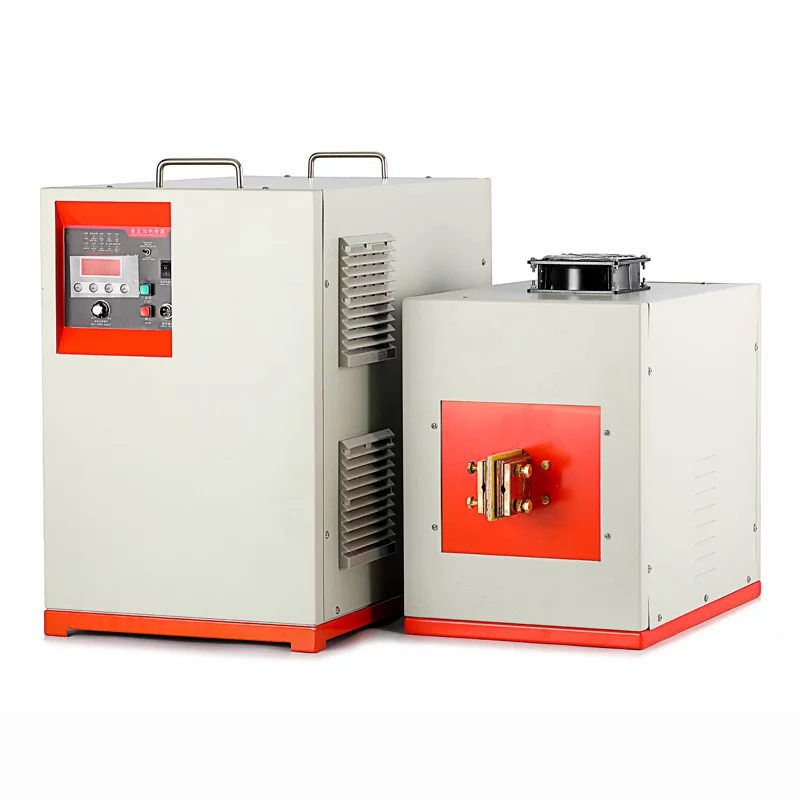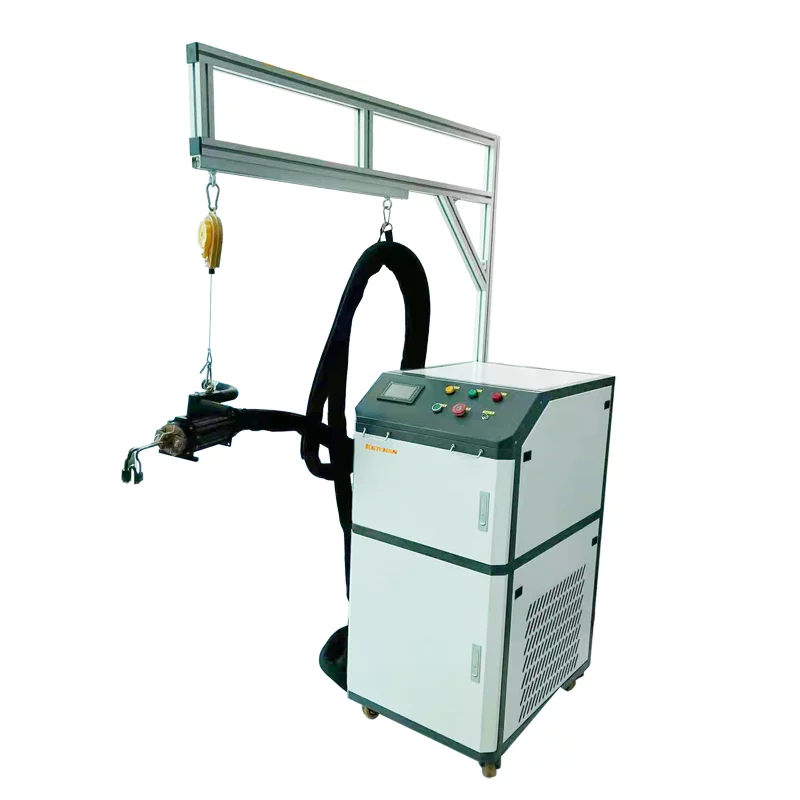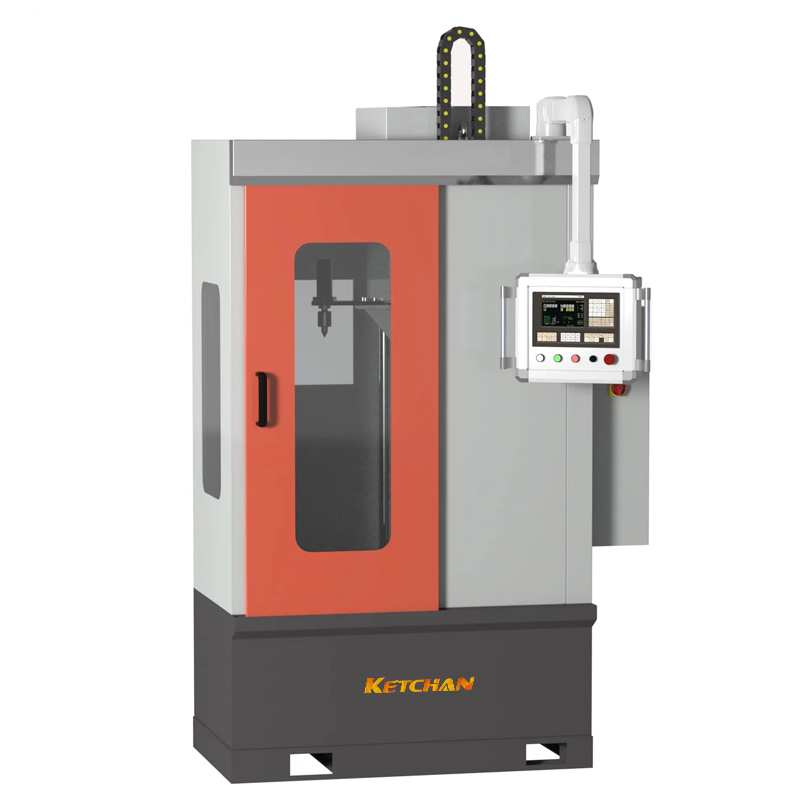1. Basic concepts of steel hardening
Subeutectoid steel is heated to above Ac3, eutectoid steel, and hypereutectoid steel are heated to above Ac1 (lower than Accm), and then cooled at a speed greater than Vk after heat preservation. The heat treatment process of converting austenite to martensite is called steel hardening. Martensite hardening is the main means of steel hardening, so the purpose of steel hardening is to obtain martensite and improve the mechanical properties of steel. Steel hardening is the most important heat treatment process for steel and also one of the most widely used processes in heat treatment.
Example of the effect of steel after hardening
2. Heating temperature of steel hardening
The quenching temperature should be chosen according to the principle of obtaining fine austenite grains, so as to obtain fine Martensite structure after quenching. The quenching temperature of subeutectoid steel is generally above Ac3 30℃ ~ 50℃, and a uniform fine Martensite structure can be obtained after quenching. If the temperature is too high, the austenite grain size will lead to a large martensite structure, which will worsen the mechanical properties of steel, especially reducing the plasticity and toughness. If the quenching temperature is lower than Ac3, the undissolved ferrite will be retained in the quenching structure, reducing the strength and hardness of the steel.
The quenching temperature is mainly determined according to the critical point of steel:
Subeutectoid steel :Ac3 above 30~50℃;
Eutectoid steel and hypereutectoid steel :Ac1 above 30~50℃;
For low alloy structural steel and high alloy tool steel, the quenching temperature may be higher in order to accelerate austenitizing considering the effect of alloying elements.
3. Determination of heating time for steel hardening
Heating time is composed of heating time and holding time. The heating time is the time needed for the parts to rise from the furnace temperature to the quenching temperature, and it is taken as the beginning of the holding time. Heat preservation time refers to the time needed for the parts to burn through and complete the austenitizing process. The heating time is usually estimated by empirical formula or determined by experiment. In production, reasonable heating and holding time are often determined through experiments to ensure the quality of the workpiece.
4. Quenching medium of steel hardening
The cooling medium used to cool steel from the austenite state to the temperature below the Ms point is called quenching medium. The cooling characteristics of the ideal quenching medium shall be: cooling slowly above 650℃.To reduce the quenching heat stress as much as possible; Rapid cooling should be performed between 650 ℃ and 400℃ to avoid pearlite transformation or Bainite transformation. Below 400 ℃ temperature area, near Ms should slow cooling in order to reduce as far as possible the pony austenite transformation stress produced by the organization. Commonly used water cooling medium, saline or alkaline solution, and various kinds of mineral oil and so on. The cooling characteristics of water are not ideal, within the range of 650 ~ 400 ℃ cold is needed, the cooling capacity is small. And in need of slow cold temperature 400 ℃ ~ Ms points area, the cooling capacity and large. In addition, the water temperature had a greater influence on the cooling capacity of water. Water is mainly used for small size, shape, simple carbon steel workpiece quenching. Saline or alkaline solution can make high temperature will markedly enhance its capability of cooling, The advantage of mineral oil is that the cooling capacity in the low-temperature zone is much less than that of water, while the disadvantage is that the cooling capacity in the high-temperature zone is also lower.
5. Quenching method of steel hardening
In order to obtain the desired quenching structure and prevent deformation and cracking, the existing quenching medium must be combined with various cooling methods, including single-liquid quenching, double-liquid quenching, graded quenching, and isothermal quenching.
A. Single-liquid quenching: Quenching the austenitized workpiece into a medium and continue cooling it to the medium temperature. Suitable for carbon steel and alloy steel workpiece with a simple shape.Water for a large workpiece, oil for the small workpiece.
B. double liquid quenching method: it is the austenitizing workpiece quenching into the first strong cooling medium, cooled to near Ms point temperature, then cooling capacity weaker immediately quenching cooling medium, until finish the martensite phase transformation. Suitable for big size carbon steel workpieces. Generally as the medium of the fast cooling water, oil is a slow cooling medium.
C. Graded quenching method: It is used to quench austenitized workpiece into salt bath or alkali bath at Ms point with a temperature slightly higher than that of steel for heat preservation. When the internal and external temperature of the workpiece is uniform, the workpiece is then taken out of the bath and air-cooled to room temperature to complete the Martensitic transformation.
D. Isothermal quenching: It is a quenching method for an austenitized workpiece to be quenched into a salt bath above Ms point, kept at an isothermal enough time to convert it into lower Bainite structure, and then taken out and air-cooled to room temperature. It is suitable for small parts with complex shapes, precise size requirements and important functions.
6. Hardenability and hardening of steel
(1) Hardenability
The hardenability of steel refers to the ability of austenitized steel to obtain martensite after quenching, which is expressed by the depth of the penetration layer and hardness distribution obtained by quenching of steel under specified conditions. In production, the critical quenching diameter is also commonly used to represent the hardenability of steel.The so-called critical quenching diameter is expressed by D0. Under the same cooling conditions, the greater D0 is, the better the hardenability of the steel is.
(2) Factors affecting hardenability
The main factor affecting the hardenability is the chemical composition, except Co, all-alloy elements dissolved in austenite increase the hardenability.In addition, the uniformity of austenite, grain size, and the presence of a second equivalent factor all affect hardenability.
(3) Determination of hardenability and its representation method
There are many ways to determine hardenability, and the most widely used is the “end quenching method”, referred to as the end quenching test. During the test, the standard sample was firstly heated to austenitizing temperature, stayed for 30 ~ 40min, and then put on the end quenching test table for cooling with water spray.
(4) Application of hardenability
The workpiece with high hardenability is easy to be quenched, with uniform organization and performance;
When the workpiece is quenched, the quenching medium with less cooling capacity can be used to reduce the quenching stress.
Large hardenability steel can be selected for a large and complex workpiece to ensure uniform and consistent organizational performance;
When the workpiece surface hardness is high, and the heart toughness is good, you can choose low hardenability steel.
(5) Hardening of steel: refers to the hardening ability of steel during quenching, and is expressed by the maximum hardness that can be obtained from the quenched Martensite.It depends on the amount of carbon in the martensite.The higher the carbon content, the higher the hardening.






